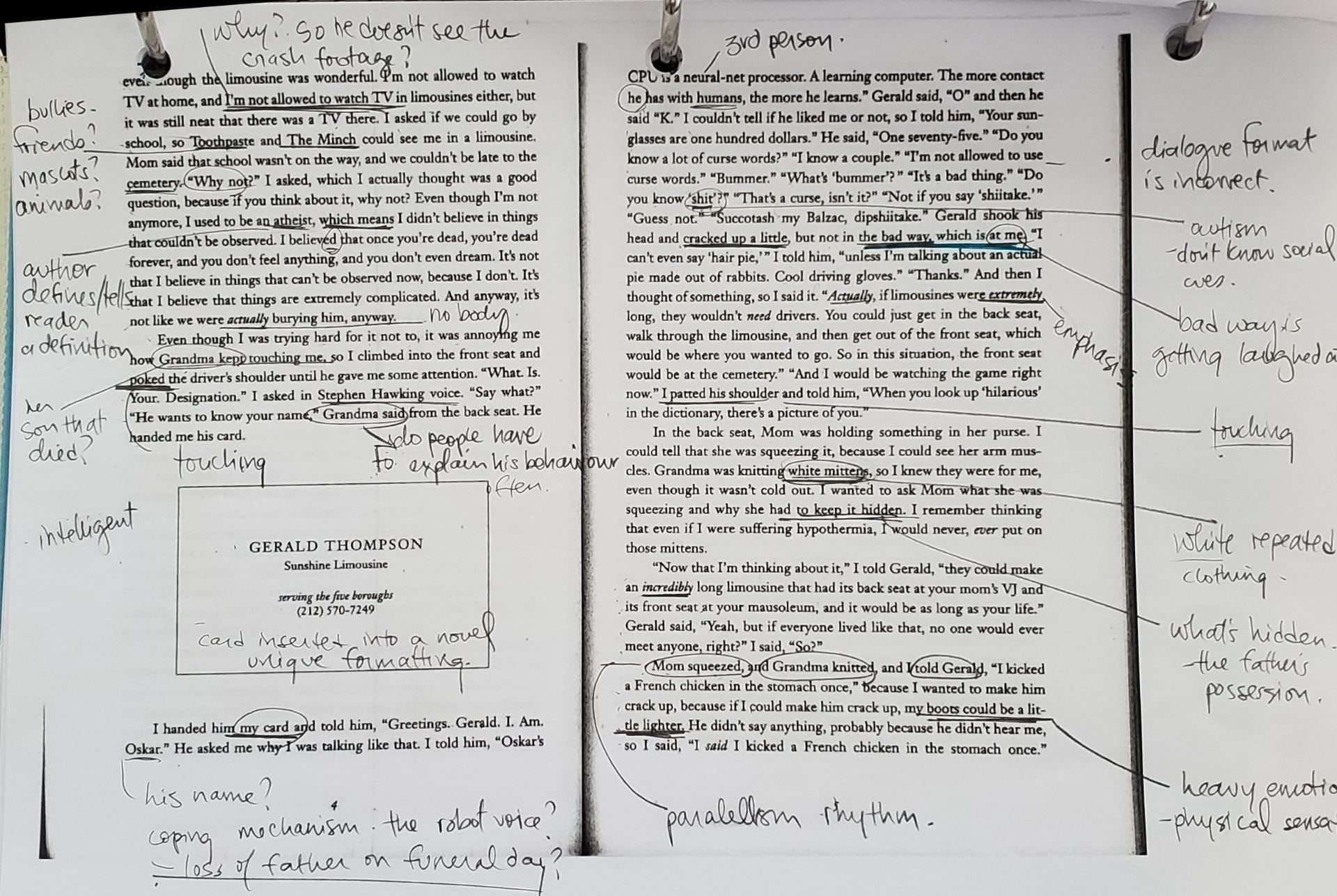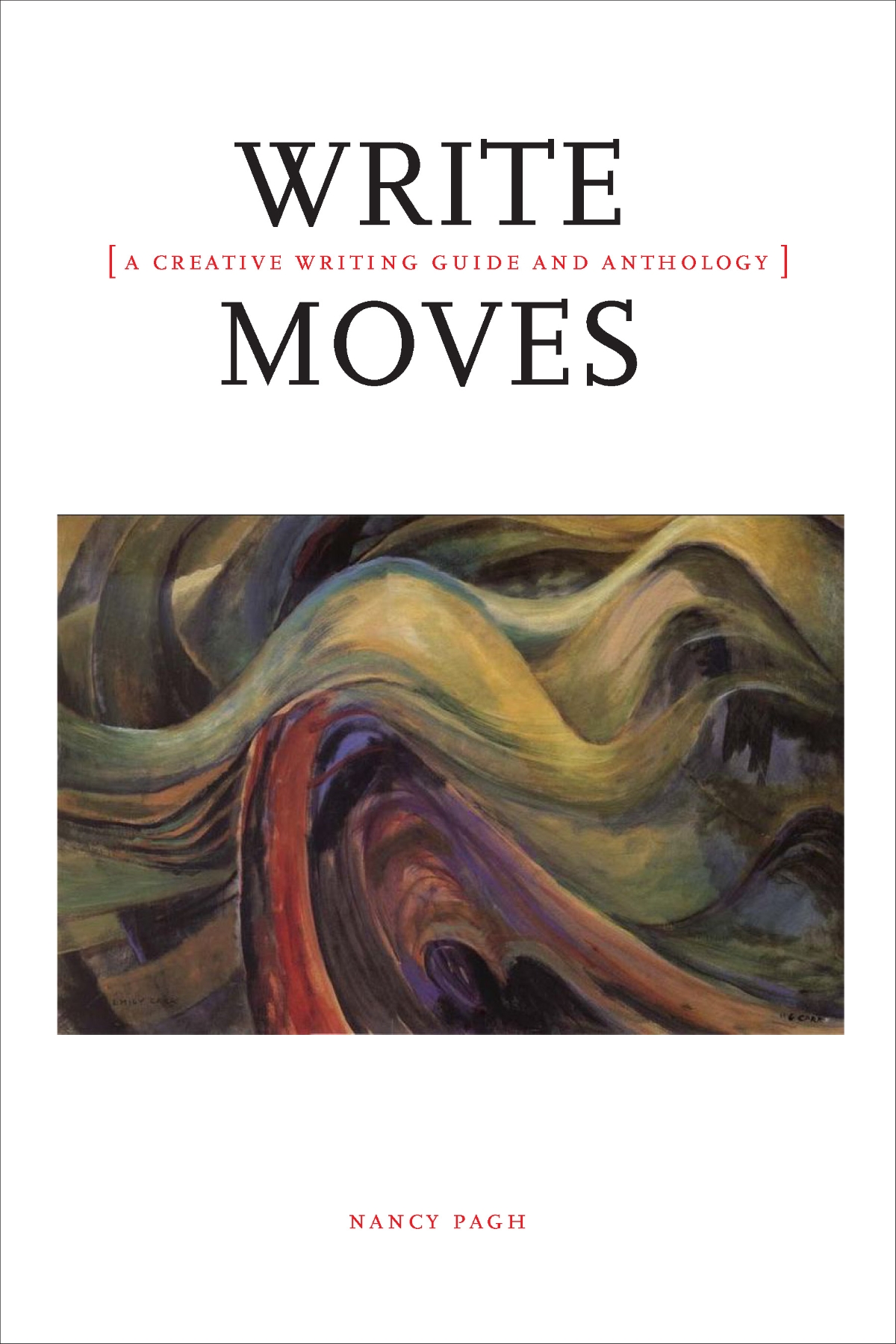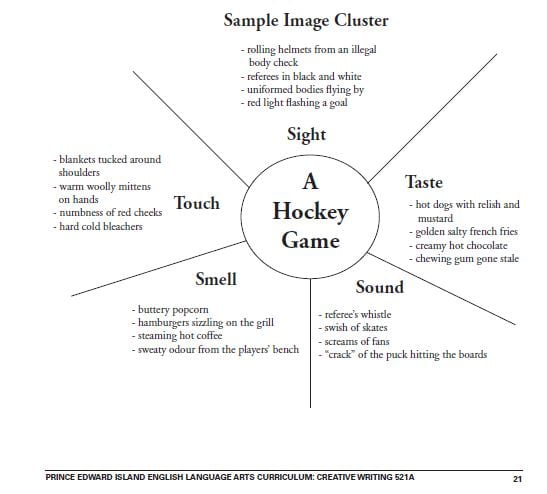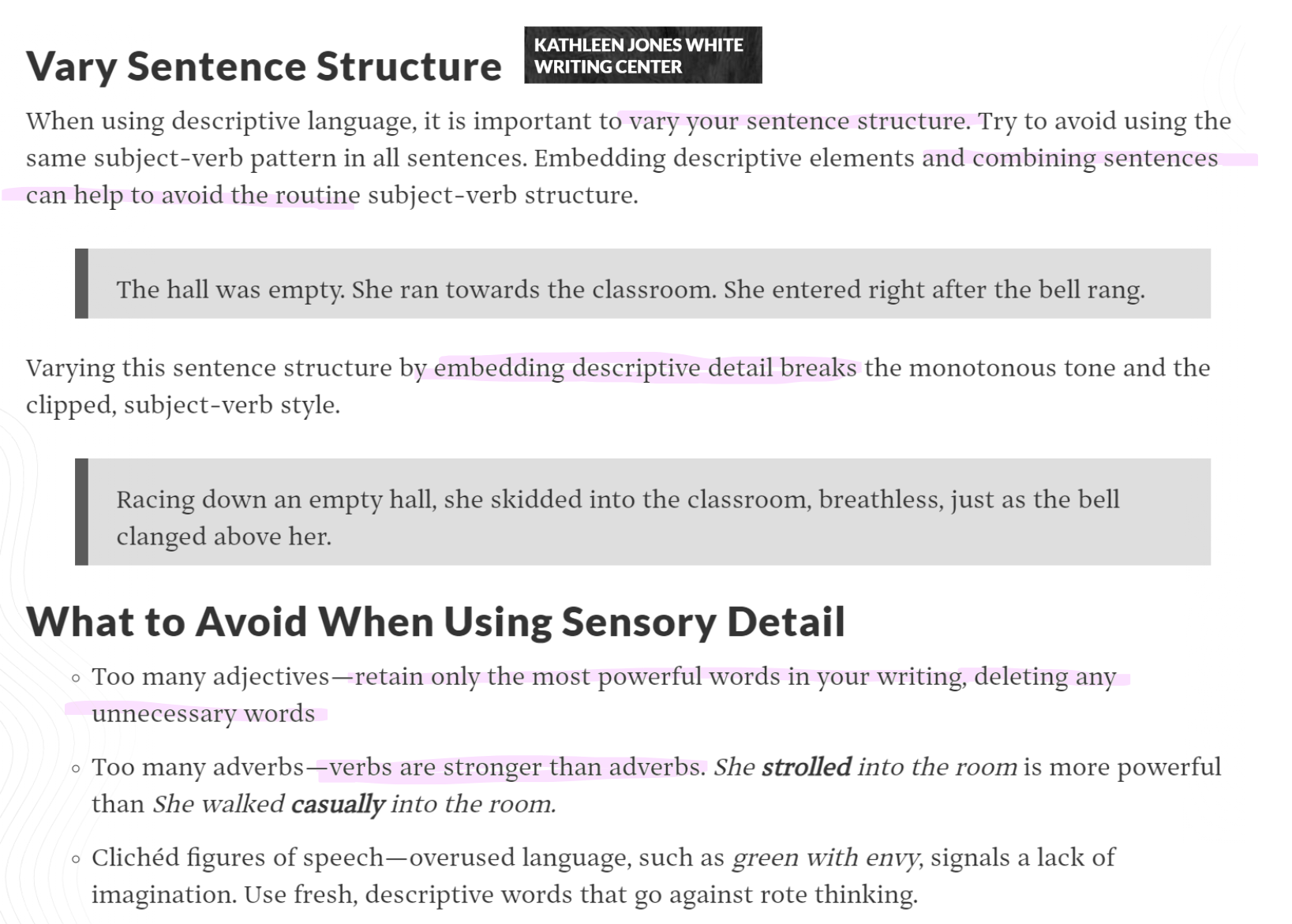Reading and recognizing the techniques and methods of good writers helps build good writers.
We’ve recently spent some time studying the beginning of two different novels. We read them without their titles, so we had no context of what we imagined the stories would be about. Through this process, we used Active Reading to comment together and point out the many things we recognized as we slowly read the pages. Our observations included elements of the writing like:
- recognizing the first phrase from paragraph 1 was mirrored in paragraph 2
- the narrator was speaking in First Person “I”
- a comment about the narrator’s “dad’s voice” made us suspect the dad was passed away or gone
- the word selection and topics developed a humorous tone (“talking anus”)
- the narrator was childish but knew a lot of adult things
- the sentence syntax/construction developed a very chaotic narrator’s voice – lots of interrupter phrases, inserts, and long, long sentences
- the writing was likely developed for a more adult audience, since teens aren’t likely to know many of the initial topics the narrator covered: Shakespeare, the Beattles’ song title used as a phrase in passing, French words, the Paris museum
- altered use of dialogue in the writing – developed between two speakers but within the same paragraph instead of a new line per new speaker.
- the tired, somewhat depressed tone of the narrator: using the dismissive words occasionally (“anyway” 2x, “anymore” in one page)
- predictions as to who “Ron” is – mentioned as if he is in a close relationship with the narrator’s mother. “Money can’t buy me love, obviously”(3) Writer casually includes Ron without telling readers who he is to the narrator for another few pages.

After reading and sharing our observations together, we each took some time to journal our reflections on:
- What we liked about the writing.
- What we disliked about the writing
- How cleverly the narrator’s personality was established
- Observations on the author’s choice of Point of View – how it may have changed the storytelling to have chosen a different P.O.V for that specific story
Assignment:
With a text selection on your own, read and record on the text your observations related to the style of the writing, development of the initial elements of literature (setting, characters, tone, and initial problem), like we’ve done together. You’ll have two samples to choose from.
Once done, reflect in your journal on the same topics:
- What you liked
- What you disliked
- Establishment of narrator’s personality
- Two or three specific developments of the writing (phrases, sentences, conflicts, etc) that you liked in particular.
Assessment:


https://iowareadingresearch.org/blog/mentor-texts-student-writing






![500+ Camping Images [HD] | Download Free Images on Unsplash](https://images.unsplash.com/photo-1504280390367-361c6d9f38f4?ixid=MXwxMjA3fDB8MHxzZWFyY2h8MXx8Y2FtcGluZ3xlbnwwfHwwfA%3D%3D&ixlib=rb-1.2.1&w=1000&q=80)


